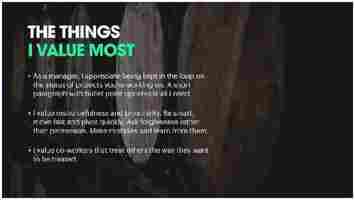Marketers! ‘Zero-click’ SERPs will force us to get more creative
Interested in digital marketing for branding and growth? Then check out Boost .

Google’s attempts at returning answers to queries online in a quicker, easier manner has made the job of SEO more challenging for marketers. With the rise of ‘zero-click’ searches, is there any way for us marketers to stay competitive?
I definitely found zero-click SERPs a difficult pill to swallow as a marketer. However, as an internet user… I see it as a highly useful innovation.
Searching Google for information about the weather, when my favorite sports team is playing next, or the net worth of Paul McCartney, the answers I’m looking for are likely to be displayed instantly at the top of the page — meaning that the information I need is right under my nose without the need for a click.
While this is definitely a convenient development, it makes my SEO much harder because I rely on attracting traffic to website pages via search engines.
Now that the majority of searches on Google end without a single click taking place , can marketers enjoy the same level of SEO success as they had prior to the release of zero-click?
What is zero-click search?
Although the implementation of zero-click searching from Google has been a relatively recent development, the practice has quickly become the dominant form of search among users. So let’s begin by defining what exactly is; because it’s important to know our enemy.
Credit: SparkToro As SparkToro highlights , the summer of 2019 saw the first time that zero-click searches overtook organic click and ad click searches. But how exactly does no-click work?
Zero-click is precisely what the name suggests: a search that results in the users having their query answered without having to make a click on to a website to find their desired information.
This means no clicking on any site featured on the SERP and having an answer displayed in a snippet at the top of the screen.
The impact on PPC
It’s perfectly natural for marketers to experience jitters about jumping both feet first into a PPC campaign while such significant changes are taking place. Paid advertising can be our lifeblood when it comes to lead generation, but we need a strong indication that money won’t be thrown away on campaigns with a diminishing ROI.
Speaking to Search Engine Land , Rand Fishkin, founder of SparkToro, said that he believes paid search CTR will fall in the wake of zero-click SERPs.
“I think paid search CTR will probably decline over the next few months,” he explained. “Each time Google changes how paid ads appear in the search results, ad CTR rises then slowly declines as more searchers get familiar with the ad format and develop ad blindness.”
As people begin to learn about how paid ads manifest themselves on Google’s results pages, we may see more searchers figuring out how to bypass paid placements. However, we also shouldn’t rule out Google adapting its SERPs in order to better accommodate paid advertisers and leverage more clicks for them.
Given that Google earned $146.92 billion from advertising revenue in 2020 alone, it’s likely that that the search engine giants will act to ensure that its users continue to find value in its advertising platform — although the way in which the corporation can update its UX model to suit both those browsing and the needs of marketers remains to be seen.
The battle for adaptation
If there’s anything I’ve learned in the wide world of SEO, it’s that Google is that it’s impossible to fight Google and come out unscathed. Sadly, in this game, it’s best to just adapt to its whims as quickly as you can to avoid disruption.
This mantra is also true of zero-click; it’s worth working on ways for you to adapt your SEO to accommodate the new technology rather than looking for ways to beat the system.
What do users expect from the web content that they navigate to? Zero-click searches mean that there’s an increasingly miniature market available for bite-sized informative content. Google has that base covered.
As marketers, the landscape that we operate in is Darwinian to say the least. Our battles to adapt and evolve our methods of reaching customers are essential in leveraging growth. How can we evolve accordingly to work in a market that’s being gobbled up by zero-click? The answer may lie in shooting for high-quality, in-depth content .
This approach to content could refer to data, analytics, or emerging trends. It may offer a deep dive into a specific topic or the sharing of first-hand experience of a subject that your website can offer an authoritative voice on.
The greatest marketers thrive on creativity, and zero-click challenges us to innovate and create content that captures the imaginations of an audience that craves more than a one-word answer.
In the image above, we can see that Google has its bases covered when it comes to questions that many users will be looking for a straightforward answer for, such as ‘what’s the best word count for SEO.’
If Google is offering surface-level content, turn your attention towards offering in-depth content that brings substance to the table.
It’s worth getting creative to outmaneuver Google’s algorithm. Marketers could even work to exploit the search engine’s SERP in creating video content that can be positioned higher within the results pages of Google.
Revising your keyword insights
Strategic keyword selection can be an important part of caring for your SEO in the age of zero-click SERPs.
While this process can be an expensive and time-consuming task when undertaken manually, you can utilize automated services like SEMRush or Ahrefs to target long-tail keywords at scale, review your competition and make more data-driven decisions to protect traffic flows.
Here, the term ‘good seo’ appears to be difficult to rank for, with Ahrefs claiming that it would take backlinks from around 291 websites for you to even think about entering the top 10 SERPs.
However, long-tail keywords require little-to-no backlinks to rank on Google and they’re capable of playing a key role in generating traffic towards your website.
It’s also important to monitor your progress in creating valuable, discoverable content to bring more value to Google’s SERPs. By utilizing analytical engines like Google Analytics or Finteza , you can tap into comprehensive visual breakdowns of the traffic your website receives.
While your content is designed to offer value to your audience, it’s not worth much if Google isn’t rewarding you with traffic because of users finding snippets of information in zero-click searches.
By getting creative and adding more in-depth value to the content you create, you can put your website in a strong position to bypass the quantitative snippets that Google’s zero-click SERPs look to exploit and offer some rich, high-quality copy for your visitors to enjoy.
Want to know more about digital marketing for branding and growth? Then secure your free ticket to Boost now!
Your leadership style needs a user manual — here’s how you do it
A few years ago I read an article that advocated for managers to create their own user manual to share with their new team or co-workers.

It struck me as a great idea given how much time we spend trying to figure each other out when we work together for the first time. The manual would provide a more explicit description of your character, personal values, and how you like to work with other people. The idea would be for you to share it with when you start working with new team members to help shorten the learning curve of having to decipher ‘you.’
I reviewed several user manuals I found online and assembled the best ideas into a user manual about myself. I created two versions: a text-based one below and a more visual slide deck that you can download the keynote or PDF file for here.
Please feel free to copy my structure to create your own personalized manual.
If you need help deciding which personality traits to list in your manual, consider doing an online DISC-like test to get some input. I asked my network to share their preferred suggestions and, in order of votes, these were the top 5 recommended:
Crystalknows
16personalities
Gallup’s CliftonStrengths
Birkman
Marcus Buckingham StandOut Assessment
But without further ado, here’s what my leadership manual looks like. Hopefully, it’ll provide you with the inspiration you need to create your own!
Introduction
Hey, I’m Wytze and I wrote this user guide to give you a better sense of me and my unique personality, style of communication, and how my character is wired. Think of it as a shortcut to help us develop the most effective work-relationship.
I’m 30-years old and currently live in a village called Oegstgeest after moving out of Amsterdam in 2018. I live there with my wife Lotte, my 18-month old son Vince and we’re expecting a second boy in March of 2021.
I’m equally ambitious about work as I am about spending time with family. I love working hard, delivering quality, and pushing my brain to and over the limit. Having worked in Events, I’m accustomed to working under pressure towards tight deadlines.
My character in bullet points:
I’m calm and composed. I only speak if I have something to say and generally don’t let my emotions get in the way of making the most rational decision.
I value relationships and results. They are not either/or with me. I care deeply about the people I work with but equally for the results I want to achieve.
Trust and commitment are key to me. I expect people to respect when information is shared privately and to always give 110% in effort.
My style
I believe the best managers work in service of their team. I’ll always adapt my leadership style to what fits your specific needs or what the situation requires.
I’m most energized when I get the opportunity to roll up my sleeves and get my hands dirty working together with you on strategy, copywriting, or sales.
I believe in giving people freedom, flexibility, and stretch assignments, and equipping them with the tools they need to develop their potential.
What I value
As a manager, I appreciate being kept in the loop on the status of projects you’re working on. A short paragraph with bullet point updates is usually all I need.
I value resourcefulness and proactivity. Be smart, move fast, and pivot quickly. Ask forgiveness rather than permission. Make mistakes and learn from them.
I value co-workers that treat others the way they want to be treated.


What I don’t have patience for
If you make a mistake or something is heading off the rails, tell me before the crash. I would rather avoid surprises.
I default to trust, but if my confidence is shaken, it’s hard to rebuild. Ways to lose my trust: withholding important information, avoiding hard conversations, or treating others with disrespect.
I am turned off by entitlement, ego, and self-importance; I don’t care what title you have, we’re all part of a team trying to complete the same mission.
How to best communicate with me
You can message me over Slack at any time of day without worrying whether or not you’re invading my privacy. I’ll respond later if it’s an inconvenient time.
Please only call me on my cell phone if it’s an emergency. Answering phone calls interrupts my workflow and I don’t always remember to phone back.
I value clear messages instead of having to decipher what’s being asked of me. If you need to choose: be blunt instead of being vague.
My strengths
I’m a great copywriter. If you’re struggling with formulating the best message for an email or announcement, I am happy to help you.
I like presenting, negotiating, and selling. These things come naturally to me.
I’m good at reading people and can get along with almost anybody.
My growth areas
I’m a perfectionist and constantly trying to make sure that this aspect of my character doesn’t hold me back from starting now and iterating later.
Having worked at one employer for a decade means my business knowledge is skewed to one source; in the near future, I’m looking to expand my horizon.
What people misunderstand about me
Even though I am great at communicating, I am actually an introvert.
If you find me silent in a conversation it’s probably because I’m carefully weighing your words to form my opinion or advice on the matter.
This article originally appeared in Wytze’s newsletter, The Hatchet .
Why my small startup said ‘no’ to a huge enterprise customer
For a newly launched startup with huge plans but limited resources, enterprise customers might seem like a blessing in the sky. After all, large companies often have what startups are looking for – a single enterprise customer can bring you 10-1000x+ more revenue right away than a small account, and with multi-year contracts to boot. Their logos and extensive network would bring validation, contacts, and reputation in the industry.

In 2017, I launched Lokalise, a B2B SaaS platform. It wasn’t my first tech company – back in the ‘90s, I was one of the first people in post-soviet Latvia with access to the Internet. That’s when I co-founded OKu, which quickly became the leading social media platform for the Russian-speaking population worldwide. In between OKu and Lokalise, I had also launched Megogoet, the leading video-streaming platform in former Soviet Union countries.
After successfully scaling a social network and B2C business, it was time to give global B2B a try – and so we launched Lokalise. Years of experience in product development, a focus on supporting global teams, as well as product-market fit, helped Lokalise rather quickly gather its critical base of customers. Six months after launch, the startup was already cashflow-positive.
That’s when we started to face tough choices dealing with affluent corporations.
Why we said “no” to some contracts with billion-dollar companies, but say “yes” to many others
Among the first enterprise-grade leads we received was a global top tech company. Due to an NDA, I won’t be able to name it but that was a billion-dollar, US-based company – enough said for you to understand our excitement.
A few months later, another lead came in from another billion-dollar company. We’d gained the attention many startups only dream about and saw these prospects as valuable opportunities to grow our business and become a globally known company.
However, things didn’t quite work out as planned.
After months of negotiations, we declined both offers. The reason? Utterly inadequate requests that we were asked to meet.
For example, in our high velocity deal segment – that’s low to mid 5-figure annual contracts – an enterprise-contract candidate was asking for a liability cap of 200x the value of the one contract. This means that if anything unforeseen were to happen, we would be on the line for it at a much higher price than what we earned from the contract in the first place. And given the difference in financial and legal muscles between our startup and global enterprises, we would likely end up on the losing end of that legal battle.
Had we agreed to such one-sided terms, we would essentially be risking our business based on a simple hope that nothing would go wrong. Even more, such a cap bears a moral hazard of excess litigation against startups. Several litigations, regardless of whether won or lost, would stop our growth. That’s why an average limit of liability for a B2B SaaS platform is 6-12 months of a contract. Given that a startup with a scalable software product can have hundreds or even thousands of enterprise contracts, high liability caps or no caps are not an option.
In another case, the enterprise requested us to add a long list of custom-built features paying us almost more than all of our other customers at that time. Though seemingly attractive at first, it meant months of work with not developing features for our standard product.
Getting this billion-dollar company as our customer seemed like a great deal upfront. But after taking a closer look, we realized that we’d basically have to rebuild our product for one customer, thereby essentially shifting our business model from scalable product to service business. And what’s more – there would be no guarantee of the deal happening at all.
The question is – who’s the real loser here?
There’s a reason why startup-corporate relationships are such a hot topic – both parties need them. Startups might need corporations’ help to grow their businesses, but corporations need startup innovations to survive.
I don’t want to call names, but the famous Blockbuster-Netflix case is the perfect example of corporate arrogance that backfired big time. Blockbuster irretrievably went from being #1 in the industry to be bankrupt in a couple of years.
So, what I’m saying is – dear enterprises, even if you’re now making billions, you should still consider the need for innovations and not underestimate the help startups can offer in this context. You need us as much as we need you.
Reijo Pold , MD at Innovation Heads – the platform for corporate innovators – says that ”one way to look at why corporates should collaborate with startups is simple economics. It allows corporations to innovate without having to spend €1+ million on employing R&D specialists. It’s far more cost-effective.”
Put simply, buying from a startup typically not only helps a corporation to become more innovative and stay in business, but also does it in a more cost-efficient way.
Before you strike a deal with an enterprise customer
Here are three lessons we learned from our experience – and three pieces of advice to other startups that are dealing with enterprise sales.
1. Don’t get dazzled by big names
It’s easy to get blinded by big and famous names. Receiving interest from globally-known brands, even more so in the beginning of your growth, feels like you’re an unknown artist who has just received an offer to record a single with Beyoncé. Get where I’m going with this?
But for a second, put that dazzling name aside and ask yourself whether you’d say yes if the offer came from a lesser-known company. Is it beneficial and fair to both parties, specifically in the mid and long term? Eventually, you’d be having more and more such leads. Do you want to risk the future of your baby unicorn by closing just one particular deal out of many to come?
A sale definitely constitutes itself as a relationship. Remember yourself dating. What kind of relationship would last longer: when it’s fair and equal, or when one party is running after another? Does two-way respect count? How important in a relationship is to establish a fair ground, even sometimes by saying “no”?
In the same vein, would it be fair to us to pay $5 million in penalties if something unforeseen happens after having received just $25,000? Or would it be fair to us to change our product at its core – with no guarantee that this relationship will last?
An enterprise customer is getting 10X+ value from your product, and plays a crucial element in their future revenue growth. Once we internalized the fact that our product has massive value to the customer, our sales negotiations became both enjoyable and effective.
Our straight-forward and honest approach, many times challenging customers certainly in a very professional way, allowed us to enjoy an above-market retention and 5-star reviews. I’m absolutely sure the same is true for all successful scaleups in B2B nowadays.
2. Keep your product scaleable
When the potential customer asks you to make changes in your product and customize it to their needs, ask how these changes would affect your business‘ scalability. By adapting your product to individual requests, you risk making your business rely on a single customer – and cut the chances to grow it beyond several customized deals.
One of the corporations asked us to add a bunch of features that would make our product so complex and so tailored to the needs of their business, that it would become problematic to sell to others. Even if this sale would mean accelerated growth in the beginning, we decided to go the long way and not to put a limit on how much revenue we can make.
3. Don’t underestimate the importance of segmentation
In the modern economy, specialization, focus, and segmentation are the main ingredients of success. Nobody should even attempt to become everything for everyone, they’ll miserably fail by being good enough for none. At the same time, narrowly focused competitors will beat universal solutions in no time.
By refusing the deals which are out of your scope and mess with your focus, you’ll ensure sustainable growth leading to global success. Getting online, you become a master of defining your market instead of satisfying the demands of the businesses in your neighborhood. Moreover, there are a lot of products that would help to make your product or service appealing to foreign customers. Make sure that you utilize the benefits of a global economy to their fullness.
Conclusion
The key lesson learned from the experiences we had is: don’t sacrifice long-term growth through scalability for a quick gain. Evaluate carefully every deal you’re being offered, even if it comes from Bill Gates himself.
In other words, keeping your customer relationships healthy will benefit your professional life as well.